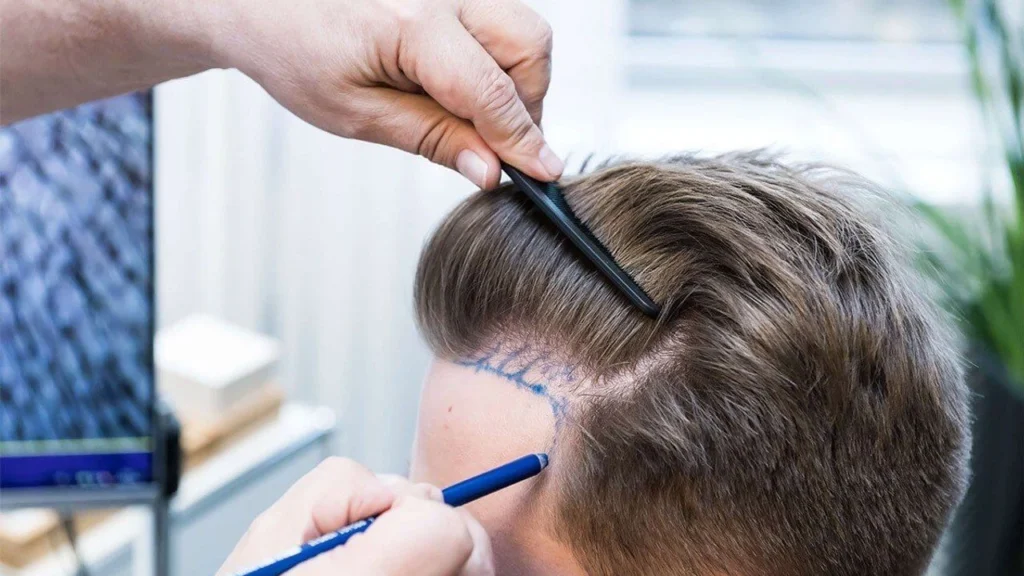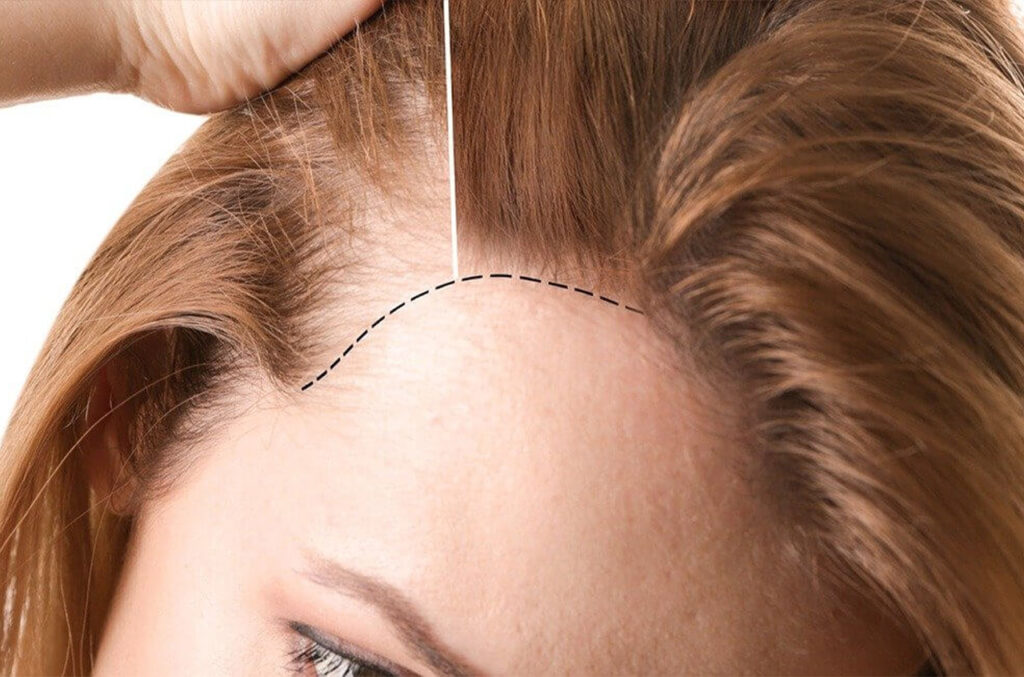
Did you know that the most important stage in hair transplantation is planning the procedure? So, how should hair transplantation planning be done when it comes to the hairline? Do you want to improve the appearance of your hairline?
Hair transplantation is no longer just a procedure to stop balding; it has become an art form that completes facial aesthetics and harmony, highlighting a person’s attractiveness. The most critical and often overlooked element of the art of hair transplantation is the hairline. The effect of this element on the face was not understood for a long time. However, today the hairline is as important as the health, aesthetics, and harmony of the face and hair. Because the hairline is not just where the hair starts; it is also a boundary that defines the frame of the face and visually conveys youth, naturalness, and balance.
İçindekiler
Why Is the Hairline So Important?
The symmetry and proportion of the face are extremely important factors in determining perception. The hairline plays a significant role in this regard. A properly positioned hairline makes the face appear younger, more balanced, and healthier. However, a poorly planned hair transplant can result in an artificial, mismatched appearance and may cause discomfort.
Especially in transplants where the width of the forehead, the depth of the temples, and the natural pattern of hair loss are ignored, the desired natural appearance may not be achieved. However, a well-planned and precise hair transplant can restore both hair and self-confidence.
Things to Consider When Planning Hair Transplantation
1. Hairline Suitable for Face Type
Each individual’s face has its own unique characteristics, and these characteristics vary from person to person. Reflecting these differences in the hairline will create a harmonious facial appearance when viewed from the outside. For example, the hairline designed for a person with an oval face will require different planning than that designed for a person with a square face. This personal approach is the key to planning and achieving a natural look.
2. Design Based on Age Factors
As time passes and age advances, the hairline recedes. A hairline design created through hair transplantation that does not reflect the person’s age, appearing “too low” and artificial, can lead to unwanted physical issues over time. Therefore, when designing the hairline, the future must be taken into account, and the necessary planning must be done for a long-term appearance.
3. Graft Distribution and Density Balance
In almost everyone, the hair at the hairline is naturally finer and less dense. However, density increases toward the inner parts of the hair. In this case, placing too many grafts at the hairline makes the transplant line appear sharper and more artificial than it should be. This uncontrolled application will particularly negatively affect the feminine appearance. Therefore, when planning hair transplantation, it is essential to place finer, hair-like grafts along the front hairline to achieve a more natural, attractive, and natural appearance. Supporting hair health from within is extremely important for thickening the hair.
4. Donor Area Analysis
The quality and quantity of hair in the donor area are the cornerstone of hair transplant planning. If the donor capacity is limited, the hairline should be positioned in a more controlled and precise manner; a long-term plan should be developed in collaboration with the individual to align with their expectations. If necessary, the transplant should be performed in two sessions, and results should not be rushed. The most important task for individuals in hair transplantation planning is to be patient.
5. Special Approach for Women and Transgender Women

In women or trans women aiming for a feminine hairline, the hairline is expected to be straighter and have a softer transition. Unlike the M-shaped hairline in men, it should be smoother, rounder, and the lines between the forehead and hair should be shorter. This different aesthetic approach should be directly reflected in the personalized planning; the hairline should be created to suit the individual’s desired facial expression, beyond gender. This process requires particular sensitivity, especially for transgender women. Because the stage of the gender transition process they are in and their preferences are extremely important for planning and outcomes.
The Contribution of Technology to Planning
The traces of advancing technology can also be seen in hair transplant design. Thanks to these technologies, it is possible to view and plan how the hairline will look before surgery using digital hair analysis and special simulation software. This digital pre-op simulation not only gives the patient an idea of the outcome but also helps the surgeon establish symmetry at a millimeter level. However, it is important to remember that what matters most in proper planning and execution is the aesthetic perspective of an experienced surgeon, even before technology comes into play.
Achieving Natural Results with Proper Planning
After hair transplantation, if the hairline looks natural when the person uses their hair in their daily life, we can speak of a real success. The path to success in this regard is possible through meticulous workmanship and detailed planning. A transplantation that is well-planned and performed by an experienced surgeon is the secret to a natural-looking physical appearance.
Therefore, hairline design and planning should not be perceived as an insignificant detail of the process. This stage is the most critical part of the entire process. A good hair transplant begins with a good hairline. And a good hairline is achieved through a personalized, patient, and scientific planning process.
Hairline Design Requires More Experience Than You Might Think
Remember, a hairline not only contributes to a good hair appearance but also reflects youth and energy on the face and hair. However, it must be designed in a way that suits the individual’s attitude, face, and hair… Think of your hairline as a signature and consider how this detail reflects your image to the outside world.
That’s why hair transplantation is not just a procedure, but an important journey. Start with a solid plan to ensure a strong foundation. Because an ideal hairline is not built randomly, but with awareness and care.
Hairtrans.com was founded by world-famous plastic surgeon Dr. MFO, who is an expert in facial feminization or facial masculinization surgeries, and is managed under his leadership. Would you like to have a hair transplant under the coordination of a plastic surgeon with many years of experience?
Whether you are a trans woman or a natural born male or female, if you are looking for the best hair transplant, contact us now.


